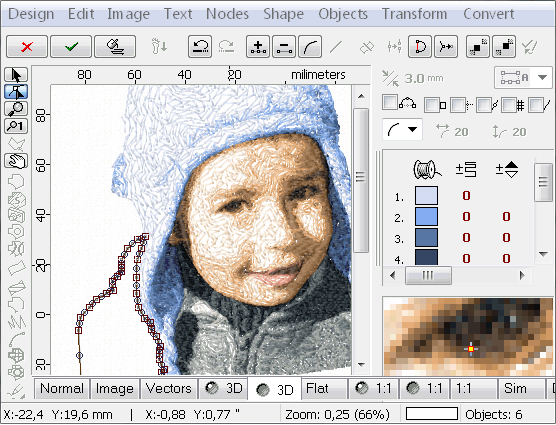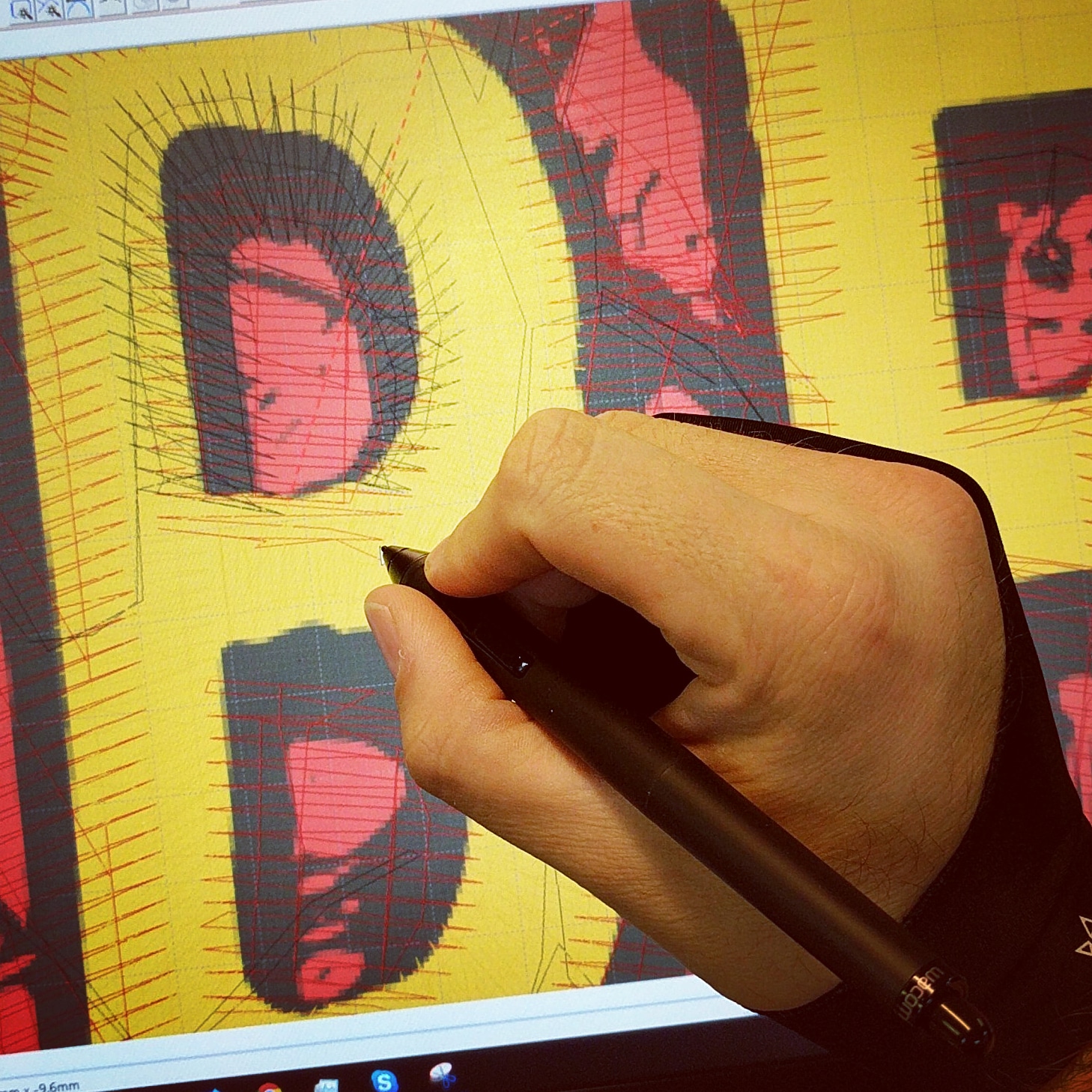Specialist Digitizing for Embroidery: Fast and Reliable Solution
Specialist Digitizing for Embroidery: Fast and Reliable Solution
Blog Article
Streamlining the Art of Needlework Digitizing: Step-by-Step Guide
Embroidery digitizing is a meticulous craft that demands precision and imagination. As technology continues to development, the digitization procedure has come to be much more obtainable, allowing enthusiasts to bring their intricate styles to life with convenience. In this overview, we will certainly unwind the intricacies of needlework digitizing, breaking down each action carefully to streamline the process and equip both newbies and seasoned embroiderers alike. Stay tuned to find exactly how you can streamline this intricate art type and transform your creative visions into perfectly stitched work of arts.
Understanding Embroidery Digitizing Software Program
Needlework digitizing software program acts as a crucial tool for transforming detailed designs right into electronic formats compatible with needlework devices, promoting specific sewing and modification. This specific software program allows customers to import various photo documents layouts, such as JPG or PNG, and transform them right into needlework machine-readable layouts like DST, EXP, or PES - Digitizing for Embroidery. By making use of functions like stitch modifying, padding choices, and string color choice, digitizing software application makes it possible for customers to regulate every element of the layout process
Additionally, advanced embroidery digitizing software program uses tools for producing complicated designs, changing stitch density, and incorporating intricate details. Individuals can additionally sneak peek the design before stitching it out, ensuring accuracy and lessening errors. Furthermore, several software program programs supply automatic functions that aid enhance the digitizing procedure, saving time and effort.
Comprehending the capacities of embroidery digitizing software program is vital for attaining top notch lead to embroidery jobs. By mastering this tool, needlework enthusiasts and specialists can release their imagination and bring complex layouts to life with precision and effectiveness.

Picking the Right Layout Data
After familiarizing yourself with the capacities of embroidery digitizing software, the following critical step in the procedure is picking the best design declare your project. Digitizing for Embroidery. When selecting a design file for needlework digitizing, it's important to take into consideration the complexity of the design, the size of the end product, and the type of fabric you will be dealing with
For detailed layouts with great details, a high-resolution picture or vector documents is suggested to guarantee that the embroidery machine can properly recreate the design. Additionally, the size of the last item plays a significant duty in selecting the best layout documents. Larger layouts might require higher resolution data to maintain clarity and sharpness.
Additionally, the type of textile you will be embroidering on influences the choice of design file. Various fabrics may require changes in the style documents to ensure that the stitches are correctly lined up and the design appears as intended. By meticulously choosing the ideal design file based on browse around this site these aspects, you can establish have a peek at this website on your own up for a successful embroidery digitizing process.
Digitizing Devices and Techniques
Using specialized software and precision techniques, digitizing devices are crucial in changing detailed styles right into embroidery-ready documents. Needlework digitizing software program, such as Wilcom, Hatch, or Embrilliance, offers the essential system to convert artwork right into stitch data. These programs offer attributes like stitch editing, underlay choices, and text devices to make sure the style converts flawlessly onto textile.
Among the vital strategies in digitizing is producing a clear course for the embroidery equipment to adhere to. This involves digitizing each aspect of the design with accuracy, determining stitch types, densities, and directions. By utilizing tools like digitizing tablets or software-specific plugins, embroiderers can attain a high degree of accuracy in their digitized designs.
Additionally, understanding the art of underlay sewing is essential for generating high quality embroidery. Underlay sewing supports the material and develops a foundation for the design, ensuring that the final product is both visually enticing and lasting. By recognizing these digitizing tools and techniques, embroiderers can raise their craft and bring intricate designs to life with accuracy and performance.
Customizing Stitch Types and Instructions
Having developed a foundation in digitizing devices and techniques, a critical element beforehand needlework workmanship depends on tailoring stitch kinds and directions with precision and objective. The option of stitch kinds can considerably influence the overall look and structure of the embroidered layout. Satin stitches, understood for their smooth and shiny surface, job well for creating borders and message. On the other hand, fill stitches are excellent for covering bigger areas effectively. By tactically integrating these stitch types, embroiderers can attain depth and dimension in their layouts.
In addition, the instructions of stitches plays an essential role in improving the aesthetic allure of the final needlework. By exploring with different stitch angles and patterns, embroiderers can bring their designs to life with exceptional detail and ins and out.
Screening and Refining Your Digitized Style
To ensure the precision and high quality see this here of your digitized design, complete screening and refinement are vital steps in the needlework digitizing process. Once you have finished the digitization of your layout, it is important to check it prior to waging the actual needlework. Examining allows you to recognize any kind of possible problems such as string breaks, stitch thickness issues, or design distortions that may affect the final result.

After screening, it is necessary to fine-tune your digitized style based on the responses from the examination sew-out. This may involve tweaking sew setups, changing thickness, or making modifications to the total style to attain the desired result. By iterating through screening and improvement, you can fine-tune your digitized layout to perfection before moving on with the actual needlework process.
Conclusion
In final thought, grasping the art of needlework digitizing requires a complete understanding of the software, choosing the best layout data, making use of digitizing devices and techniques, customizing stitch kinds and instructions, and testing and refining the digitized style. By complying with these actions, embroiderers can simplify the digitizing process and create top quality embroidered layouts with precision and performance.
Report this page